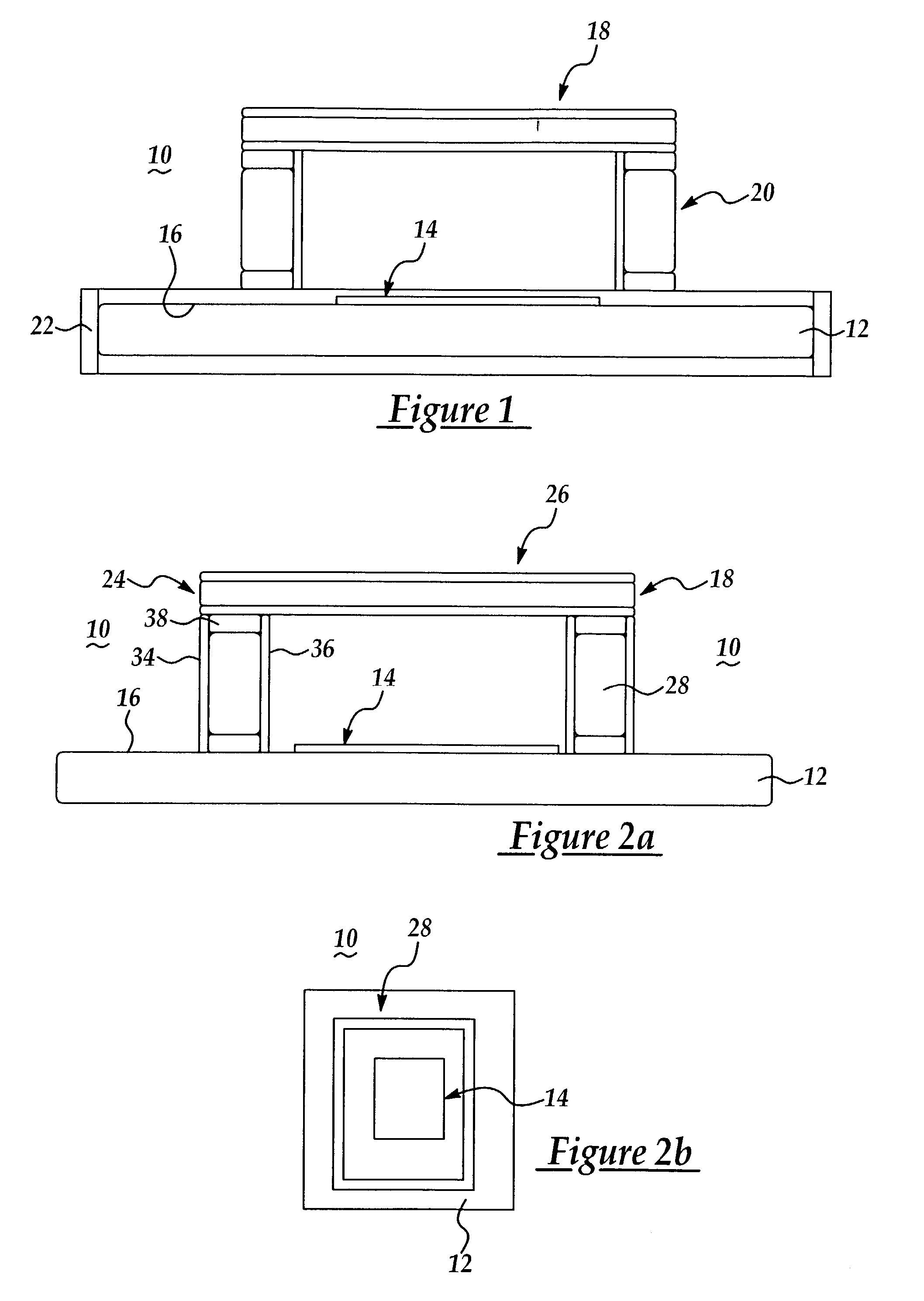Reticle with antistatic coating
a technology of anti-static coating and reticle, which is applied in the field of semiconductor industry, can solve the problems of uncontrolled electrostatic discharge (esd), especially prone to static electrical charges, and geometry degradation, and achieve the effect of eliminating the potential damage of esd
- Summary
- Abstract
- Description
- Claims
- Application Information
AI Technical Summary
Benefits of technology
Problems solved by technology
Method used
Image
Examples
Embodiment Construction
[0041]Referring now to FIG. 1, a photomask (reticle) 10 has a quartz blank 12 with a thin patterned opaque metal layer 14, preferably made of chromium (chrome), deposited on a surface 16 of the blank 12. Typically, the layer 14 is formed with chrome less than 100 nm thick and covered with an anti-reflective coating, such as chrome oxide (not shown). A pellicle membrane 18 is arranged over the layer 14 of the reticle to keep it free of foreign particles. A frame 20, over which the membrane 18 is tightly stretched, allows positioning the latter at some height above the photomask. Such height (usually, of about 5–10 mm) is greater than the focal length of the light imaged onto the photomask. Thus, a dust particle that found its way on the pellicle is out of focal plane and is invisible to the projection optics. A conventional pellicle frame is made of anodized aluminum.
[0042]According to the present invention, a layer 22 of an antistatic film is deposited onto the reticle 10. The layer...
PUM
| Property | Measurement | Unit |
|---|---|---|
| thickness | aaaaa | aaaaa |
| width | aaaaa | aaaaa |
| width | aaaaa | aaaaa |
Abstract
Description
Claims
Application Information
 Login to View More
Login to View More - R&D
- Intellectual Property
- Life Sciences
- Materials
- Tech Scout
- Unparalleled Data Quality
- Higher Quality Content
- 60% Fewer Hallucinations
Browse by: Latest US Patents, China's latest patents, Technical Efficacy Thesaurus, Application Domain, Technology Topic, Popular Technical Reports.
© 2025 PatSnap. All rights reserved.Legal|Privacy policy|Modern Slavery Act Transparency Statement|Sitemap|About US| Contact US: help@patsnap.com



